MODINAMA: ISSUES THAT DID NOT MATTER
By Subhash Gatade
Leftword Books, 2019, pp. 128 , Rs.195.00
HINDUTVA: EXPLORING THE IDEA OF HINDU NATIONALISM
By Jyotirmaya Sharma
Context, 2019, pp. 190, Rs.313.95
M.S. GOLWALKAR, THE RSS AND INDIA
By Jyotirmaya Sharma
Context, 2019, pp. 94, Rs.299.00
DECODING THE RSS: ITS TRADITIONS AND POLITICS
By Raosaheb Kasbe
Leftword Books, 2019, pp.174, Rs.250.00
RAJIV GANDHI TO NARENDRA MODI: BROKEN POLITY, FLICKERING REFORMS
By Parsa Venkateshwar Rao Jr.
Sage Select, 2019, pp. 211, Rs.330.75
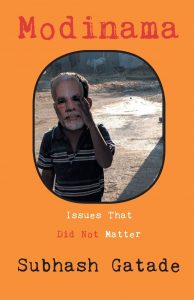 The 2014 general elections which saw the Bharatiya Janata Party return to power with an absolute majority is believed to have brought an important paradigmatic shift to Indian politics. Scholars commenting have termed it as a majoritarian shift. Post elections, there have been discussions which tried to understand the reasons behind this massive mandate that the Right Wing political party managed to get. This Right Wing shift in India’s electoral politics was further proven by the 2019 Parliament election results which gave the BJP a larger mandate. Scholars have written trying to understand the rise of BJP—is it an isolated event or a continuation of past developments? This becomes important because even at the international level, there is a shift towards conservative politics.
The 2014 general elections which saw the Bharatiya Janata Party return to power with an absolute majority is believed to have brought an important paradigmatic shift to Indian politics. Scholars commenting have termed it as a majoritarian shift. Post elections, there have been discussions which tried to understand the reasons behind this massive mandate that the Right Wing political party managed to get. This Right Wing shift in India’s electoral politics was further proven by the 2019 Parliament election results which gave the BJP a larger mandate. Scholars have written trying to understand the rise of BJP—is it an isolated event or a continuation of past developments? This becomes important because even at the international level, there is a shift towards conservative politics.
Indian academia has also taken an objective look at this shift. A number of books have been written on various aspects of present-day politics, the ideologies and icons that paved the way for this rise and continue to provide intellectual fodder for this politics, the liberal economic policies which have been taken to their logical conclusion by the present government, etc. And these books have provided us with important insights to make sense of the present-day political situation of the country.
Subhash Gatade in Modinama: Issues That Did Not Matter contextualizes the rise of the BJP in a fertile ground prepared by previous governments. Gatade talks about the systematic dismantling of various public institutions that this government has undertaken. Be it the police, bureaucracy, CBI, ED etc., there is an attitude to politically manipulate these institutions and use them for political vendetta. There is a normalization of violence. The harbingers of New India see no problem in giving parliamentary ticket to a terror accused or garlanding a mob lynch accused.
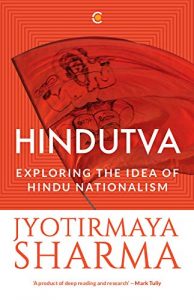 The party in power which lacks tall ideological icons has co-opted stalwarts from Sardar Patel to Netaji Subhash to Babasaheb Ambedkar. There is even a selective appropriation of the past. VD Savarkar did not give much importance to cow worshipping, but the government has introduced stringent punishment for cow slaughter. This ban in turn has negatively impacted the leather and tanning industry which employs a large number of Dalits and created a menace of stray cows in public spaces. Gatade takes up government policies like Swachch Bharat and systematically unearths the government’s hypocrisy in bringing about real transformation. Safai karmacharis continue to die and swachchata has become a mere photo op.
The party in power which lacks tall ideological icons has co-opted stalwarts from Sardar Patel to Netaji Subhash to Babasaheb Ambedkar. There is even a selective appropriation of the past. VD Savarkar did not give much importance to cow worshipping, but the government has introduced stringent punishment for cow slaughter. This ban in turn has negatively impacted the leather and tanning industry which employs a large number of Dalits and created a menace of stray cows in public spaces. Gatade takes up government policies like Swachch Bharat and systematically unearths the government’s hypocrisy in bringing about real transformation. Safai karmacharis continue to die and swachchata has become a mere photo op.
Gatade’s book shows how the seed for this situation was sown by the Congress which selectively employed soft Hindutva, cow politics and even minority appeasement to garner votes. Congress banned cow slaughter in different States and introduced punishment. The BJP has stringently implemented these punishments and rules formulated by the Congress.
The current regime time and again reiterates the idea of a Hindu nation and quotes national ideologues starting from Swami Vivekananda, Lokmanya Tilak and others to back this claim. Jyotirmaya Sharma explores this idea in his book Hindutva: Exploring the Idea of Hindu Nationalism and by discussing the works of Swami Vivekananda, Dayanand Saraswati, Sri Aurobindo and VD Savarkar, he shows why it becomes possible for Right Wing Hindutvavadi political formations to borrow from them. All the four ideologues believed in the need to reform Hinduism and place it back on the high pedestal where it belongs.
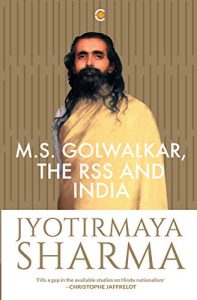 All the ideologues believed that the reform of Hinduism will mean reverting to a unified notion of Hinduism while dispelling persisting falsehoods. They were suspicious of diversity. Dayanand Saraswati promoted an idea of a unified monotheistic and aggressive Hinduism with no space for dissent. He believed in Aryan supremacy and the need to establish Vedic Hinduism. Sri Aurobindo started as a nationalist and then came under the influence of religion. He believed that Indians must go back to the ancient traditions. He romanticized Kshatriyahood and believed that ends will justify means even if they are violent. Like Dayanand Saraswati, Sri Aurobindo also wanted a unified Hinduism without much inherent differences.
All the ideologues believed that the reform of Hinduism will mean reverting to a unified notion of Hinduism while dispelling persisting falsehoods. They were suspicious of diversity. Dayanand Saraswati promoted an idea of a unified monotheistic and aggressive Hinduism with no space for dissent. He believed in Aryan supremacy and the need to establish Vedic Hinduism. Sri Aurobindo started as a nationalist and then came under the influence of religion. He believed that Indians must go back to the ancient traditions. He romanticized Kshatriyahood and believed that ends will justify means even if they are violent. Like Dayanand Saraswati, Sri Aurobindo also wanted a unified Hinduism without much inherent differences.
Swami Vivekananda is another ideologue who is regularly co-opted by the Right Wing forces of today. He also believed in the supremacy of the Vedas and Hinduism but believed that Hinduism is all encompassing. While he believed in the need for social mobility of lower castes, he did not reject the caste system outright. He built upon a masculinist notion of nationalism and was critical of the bhakti tradition.
The fourth ideologue that Sharma talks about is VD Savarkar who was not essentially a spiritual leader like the previous three. Rather Savarkar indulged in using religion for political ends. Savarkar defined Hindus by othering non-Hindus. While Muslims were the perennial outsiders for him, he wanted Hindus to emulate the characters of Muslims in terms of monotheism and commitment to religion. He justified the 1857 violence. Savarkar was influenced by Mazzini and wanted Hindus to follow a similar mode of guerrilla warfare, nationalism, etc., to establish a Hindu rashtra. But he also found differences divisive and wanted a unified Hindutva which would lay down the foundation of a nation.
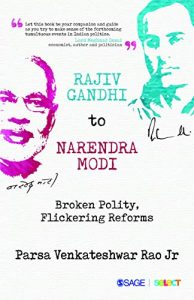
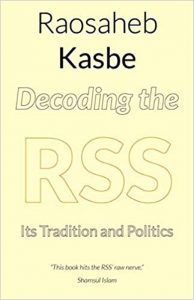 All four ideologues believed in a unified Hinduism and were suspicious of diversity. Sharma does the crucial work of pointing out that they did not differentiate between Hindutva and Hinduism. In fact, what we call Hindutva today—an idea of a religion which is exclusionary and rigid, was according to these ideologues the reformed version of Hinduism.
All four ideologues believed in a unified Hinduism and were suspicious of diversity. Sharma does the crucial work of pointing out that they did not differentiate between Hindutva and Hinduism. In fact, what we call Hindutva today—an idea of a religion which is exclusionary and rigid, was according to these ideologues the reformed version of Hinduism.
Apart from these four ideologues, another person whose works have found new takers is MS Golwalkar and his thoughts continue to be the guiding force of the RSS. Jyotirmaya Sharma in his book, M S Golwalkar: The RSS and India, analyses these thoughts. Golwalkar became the Sarsanghchalak of the RSS in 1940 and served the organization till his death in 1973. His long stint in the RSS played an important role in shaping the organization. Interestingly, Sharma shows that while Golwalkar believed in the supremacy of India, most of his thoughts were borrowed heavily from European constructs. Like his icons Swami Vivekananda, Sri Aurobindo, Lokmanya Tilak, Madan Mohan Malaviya and others, Golwalkar also wanted a unified Hinduism and nurtured a deep suspicion of diversity.
Gandhiji’s murder in 1948 brought a crucial shift in the work of the Sangh. Banned at the behest of Sardar Patel, the organization was allowed to continue works only as a cultural organization. Golwalkar supported maintaining a distance between the Sangh and the government but he also believed that the government should be subservient to the Sangh. Elements of fascism are found in his thoughts and he believed that individuals are for the greater good of the society. He felt that the cause of subjugation of India was internal divisiveness which weakened the nation.
Golwalkar perceived Muslims as permanent enemies and believed that inequality was natural. He was critical of Socialism and Communism which according to him imposed an ‘artificial equality’ amongst people. He believed that the move away from rigid Hindu ideas was a problem. Till his death he propagated the ideas of superiority of Hindus and reiterated that even Muslims should acknowledge their Hindu ancestry and call themselves Hindus. Keeping in line with Savarkar and other Right Wing ideologues, he felt pluralism will weaken the nation.
Golwalkar wanted the Jan Sangh to engage in politics and the RSS to work as its guiding force. At present we see that with the BJP in power, the RSS has succeeded in appropriating much socio-political space. Books written about the RSS and their work at the grassroots show how BJP managed such massive electoral success. Decoding the RSS is the English translation of Raosaheb Kasbe’s popular Marathi book Zot (Searchlight) published in 1978. Kasbe faced much opposition from RSS activists and copies of his book were burnt in many parts of Maharashtra. However, instead of RSS’s contemporary political role, the book focussed on the various contradictory stands of the organization and tried to expose its problematic stand on many issues.
Kasbe elaborates on how Sangh members did not participate wholeheartedly in the freedom movement because they perceived Muslims as the greater enemies. Golwalkar also did not have much problem with the regressive Chaturvarna system. His views were published in the form of a book with the title Bunch of Thoughts where he stated that ideas perceived as ‘anti-Hindu’ will not be tolerated. Interestingly, Golwalkar perceived democracy, equality and Communism as anti-Hindu.
Golwalkar juxtaposed western spiritualism with Indian spiritualism, and stated that in India no absolute distance between religion and politics should be encouraged. Rather, the two are intertwined. Kasbe then points out how the emergence of a priestly class among Hindus led to large scale economic exploitation and Brahminism challenged by Budhdhism, Jainism and the materialistic Lokayat traditions saw the decline of the latter. Kasbe also talks about Golwalkar’s take on Muslims who according to him were the perennial others.
Golwalkar justified an unequal society and believed in ghar wapsi or reconversion of non-Hindus, especially the backward castes. Interestingly, Kasbe differentiates between Golwalkar and Savarkar and believes that Savarkar was more politically pragmatic. Written in 1978, the book also did not talk about the inroads that the Sangh made even amongst Muslims by forming a minority wing. While Kasbe rightly pointed out that the rise of Hindu communalism fed into the upsurge of Muslim fundamentalism, his take on how the ego of Hindus and Muslims weakened the nation gives a very limited understanding of colonization.
The second term of the NDA government is marked by a deep economic crisis. The run up to the 2019 elections saw issues of high unemployment, slowing growth, disinvestment, fall in production sector, etc., all pointing to a decreasing purchasing power of people. While the government has been forced to take some drastic short-term measures like borrowing from the RBI and cutting down of corporate taxes, problems of inflation and a slow market are yet to subside. So the question is, is the current situation an inherent crisis of the capitalist model that India harped on in 1991? Parsa Venkateshwar Rao Jr in his book, Rajiv Gandhi to Narendra Modi: Broken Polity, Flickering Reforms, tries to engage with some of these concerns. The book covers a period of thirty-three years and tries to trace the trajectory of the rise of two political leaders.
Rao points out that Rajiv Gandhi and Narendra Modi came from starkly different backgrounds. While Rajiv Gandhi rode to power based on dynasty and legacy, Modi made his way to the top from below. However, the careers of the two leaders are similar in some uncanny ways. Both the leaders rose to power riding on majoritarianism—Rajiv Gandhi after the assassination of Indira Gandhi and Modi after the riots post-Godhra.
Rao’s book shows that the lives of the two leaders converge in the fact that the present government under Modi has actually built up on the foundations laid by Rajiv Gandhi’s government. It was Rajiv Gandhi who paved the way for neoliberalism. The locks of the contested Babri Masjid were opened during his regime. The present government is actually taking these issues to their logical conclusion. We are faced with disinvestment, large scale privatization and all these are a continuation of the model put in place by previous governments.
These books give an insight into the present political situation in the country. Jyotirmaya Sharma’s books elaborate that Hindutva is not actually a fringe idea. Popular leaders of the freedom movement have provided ample fodder for such exclusivist formulation which also perceives plurality in a democratic multicultural society as a threat. The countering of Right Wing exclusivist politics must move beyond mere politics and engage with these ideas as well. Further, the economic problems that the country is facing today need a holistic approach to look at the problems inherent in a liberal capitalist economic system instead of resorting to isolated policy decisions.
Parvin Sultana is currently working as an Assistant Professor in Pramathesh Barua College, Gauripur in Assam. She writes on different socio-political issues in various newspapers and magazines. Her research area includes gender, migration politics in Northeast India.
Originally published in Thebookreviewindia.org
SIGN UP FOR COUNTERCURRENTS DAILY NEWS LETTER










































